Located in Kanaya, Shimada City, the Tea Museum, Shizuoka is a museum where visitors can learn about and experience not only Shizuoka tea, but also the tea and its history from around the world.
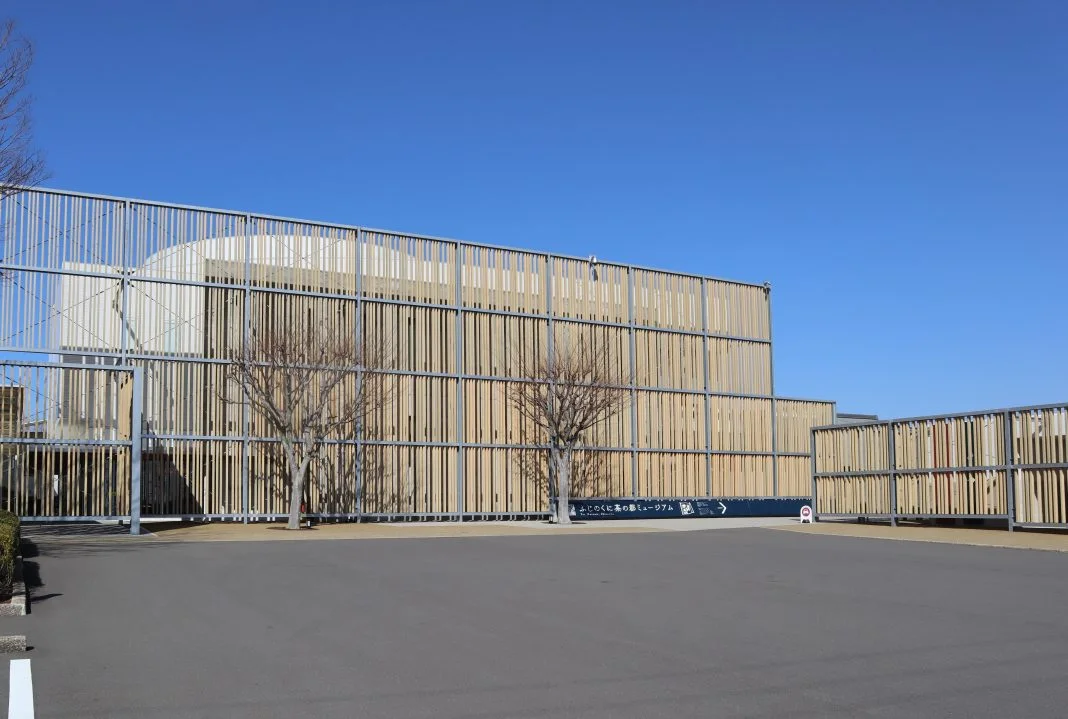
The exterior is decorated with wood, giving off a sense of warmth. Standing in the midst of tea plantations, its surrounding landscapes are gorgeous.
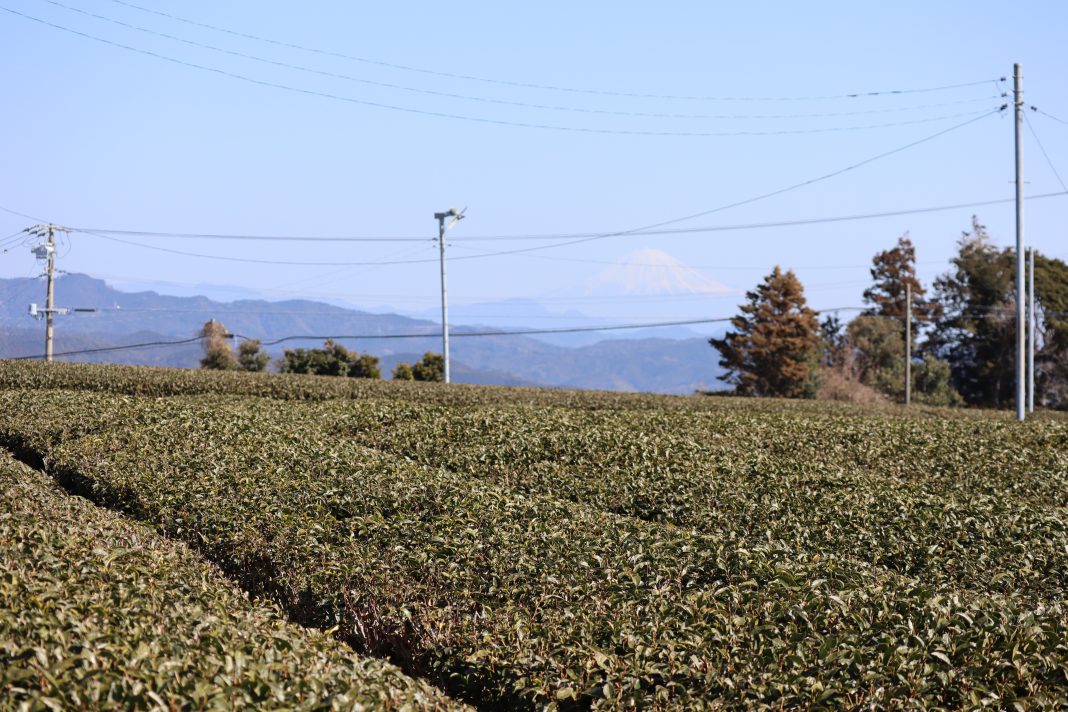
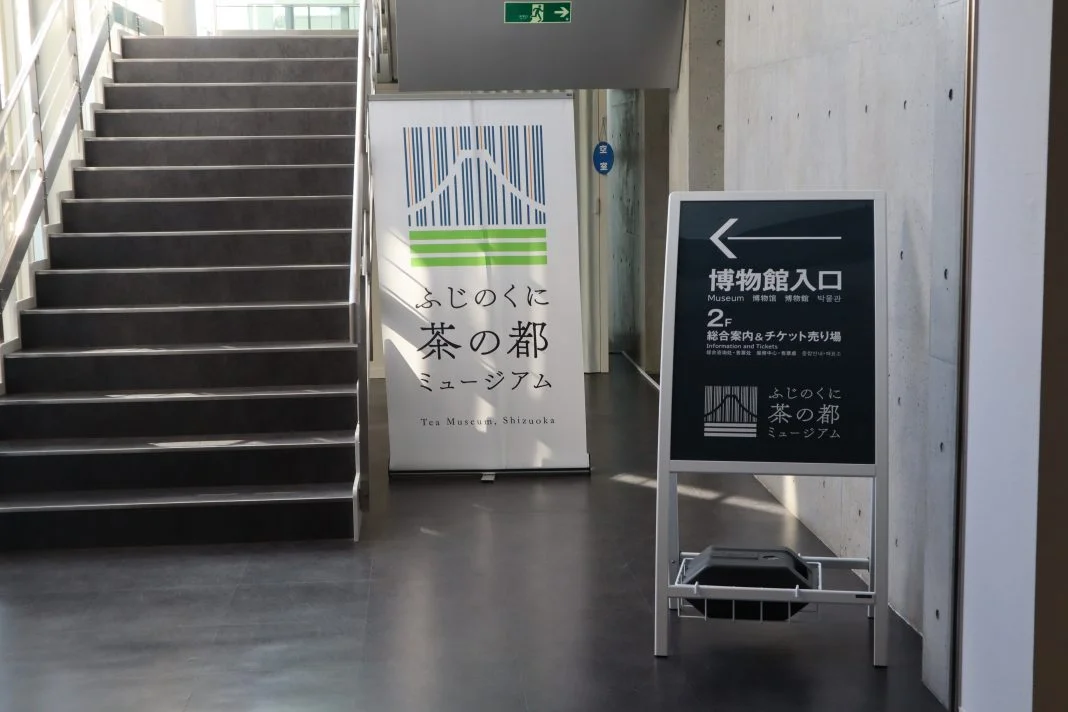
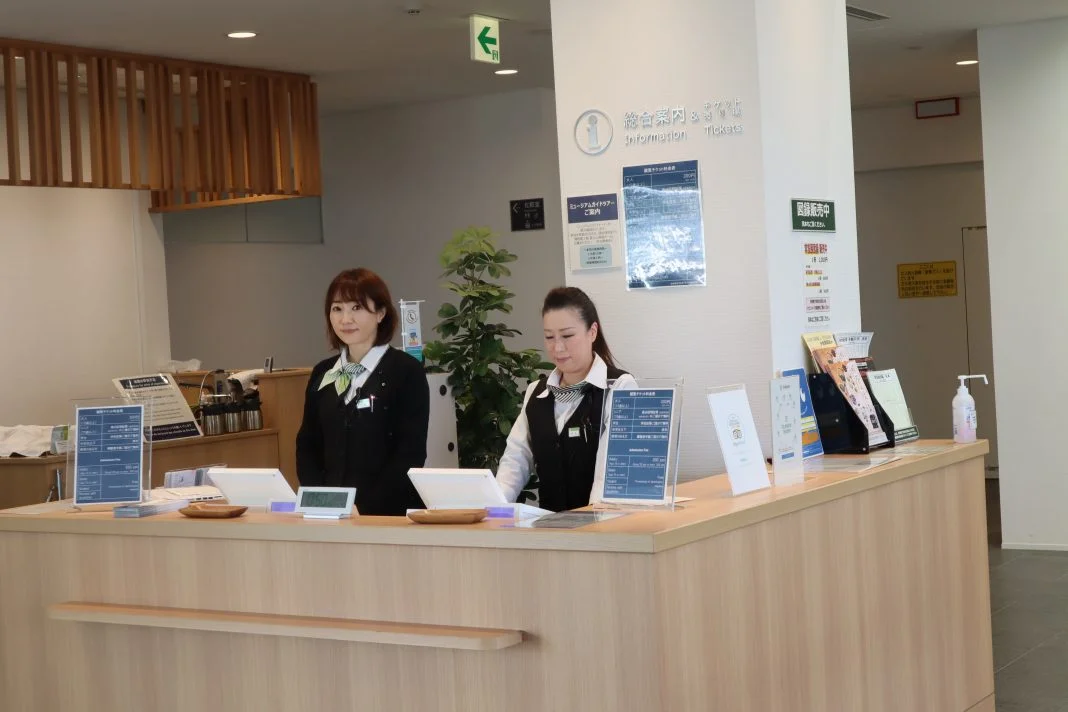
When you go up the stairs to the second floor, the first thing you see is the information center. Here, you can pay the entrance fee, receive information about the facilities, and make reservations for various hands-on tea experiences.
Table of Contents
2nd Floor Hands-on experience area
Next to the information center on the second floor of the museum, you can find the hands-on experience area, where you can learn the proper way to brew a cup of tea, among other things. During my visit, I learned how to brew oolong tea and black tea.


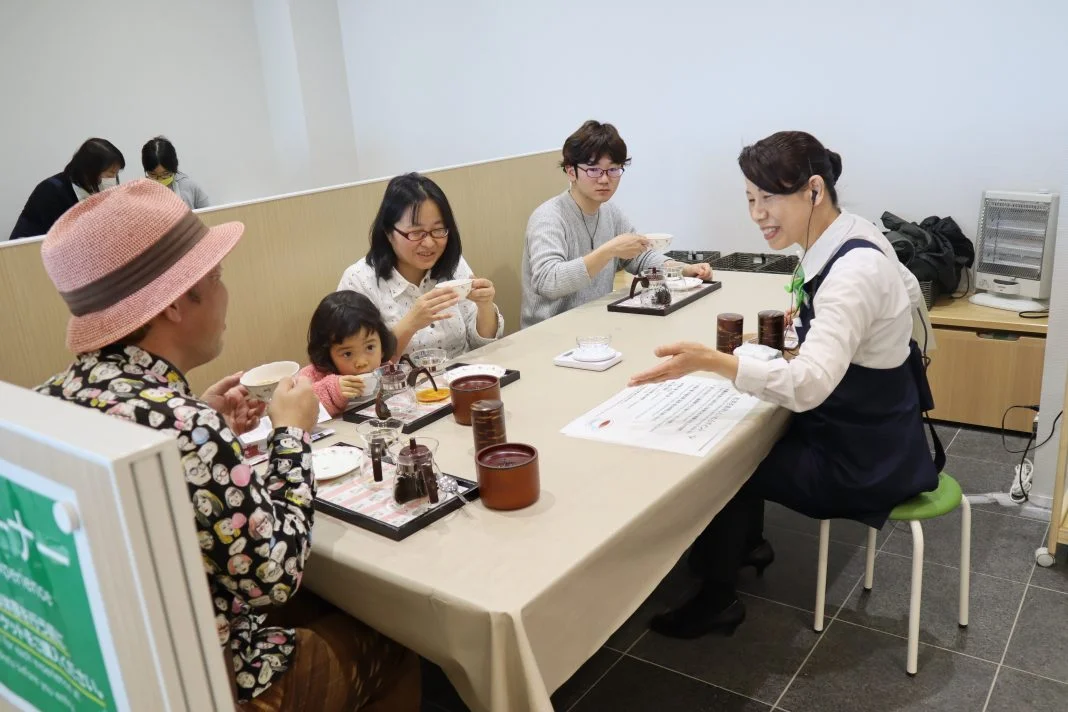
.jpg.webp)
The key to brewing oolong tea is to maintain a steady temperature to the extent possible. For this reason, teapots, cups and other utensils are warmed up with hot water ahead of time. The hot water is then discarded before brewing and pouring the tea.
You can experience grinding matcha at the hands-on experience area as well, so please pay a visit.
The beautiful view of the tea plantations from the 2nd floor terrace shows the original landscape of Japan
From the 2nd floor terrace, you can get this gorgeous view of the tea plantations.
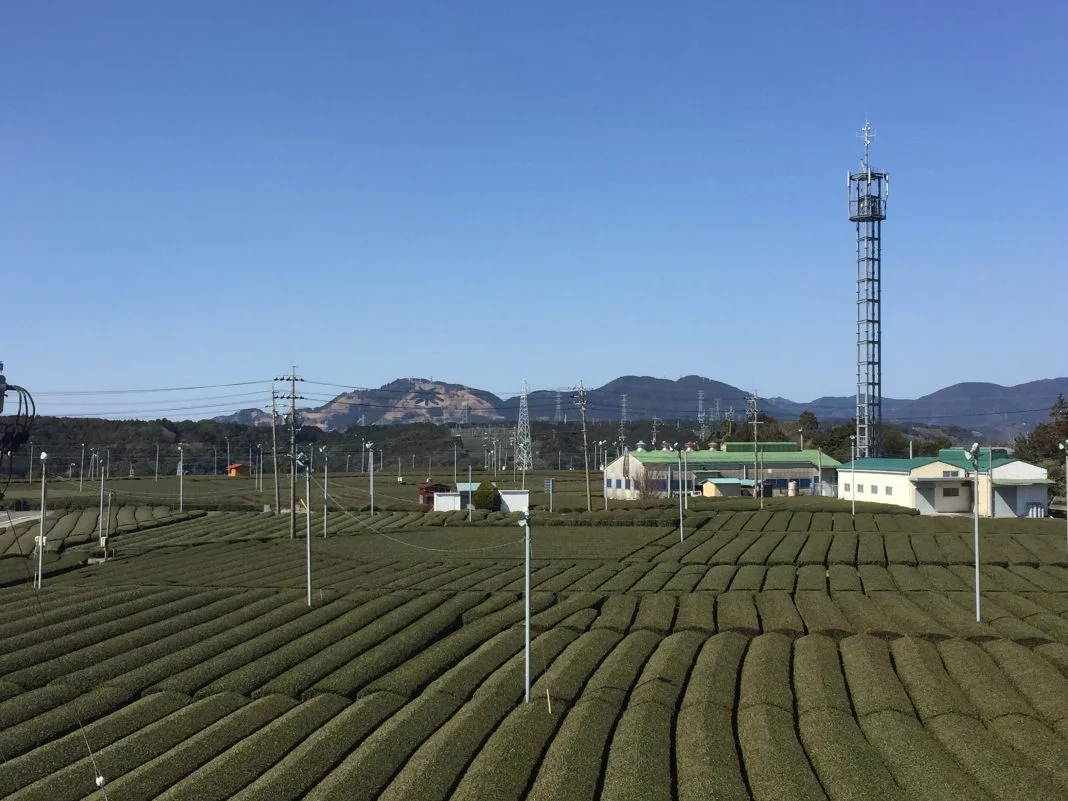
Up to the 3rd floor and the interior of the museum
The exhibition rooms of this museum are on the 2nd and 3rd floors. Let’s start with the 3rd floor. You can admire Mt. Fuji from the 3rd floor. The view is especially clear on sunny days. It’s a truly magnificent sight.
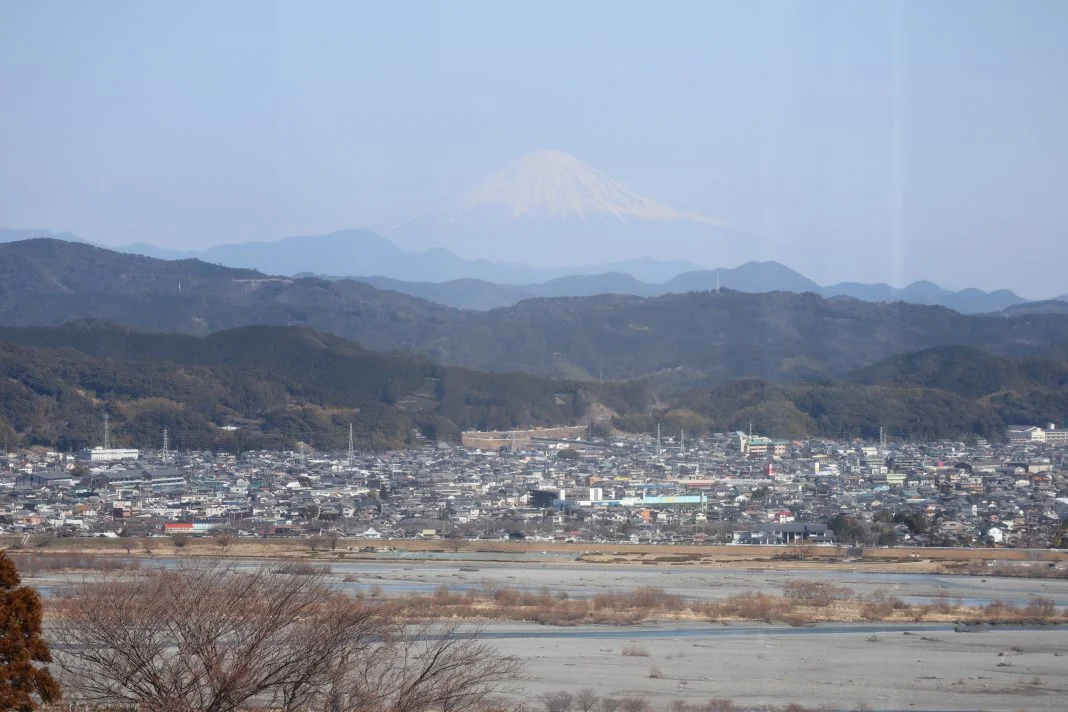
The 3rd floor is where the exhibition “Tea of the World” is held .
Let’s learn about the origins of tea
Tea is said to originate in China, and the exhibition room includes exhibits on the history of tea in China.

There is also a replica of the largest tea tree in the world, called the Cha-ju-o.
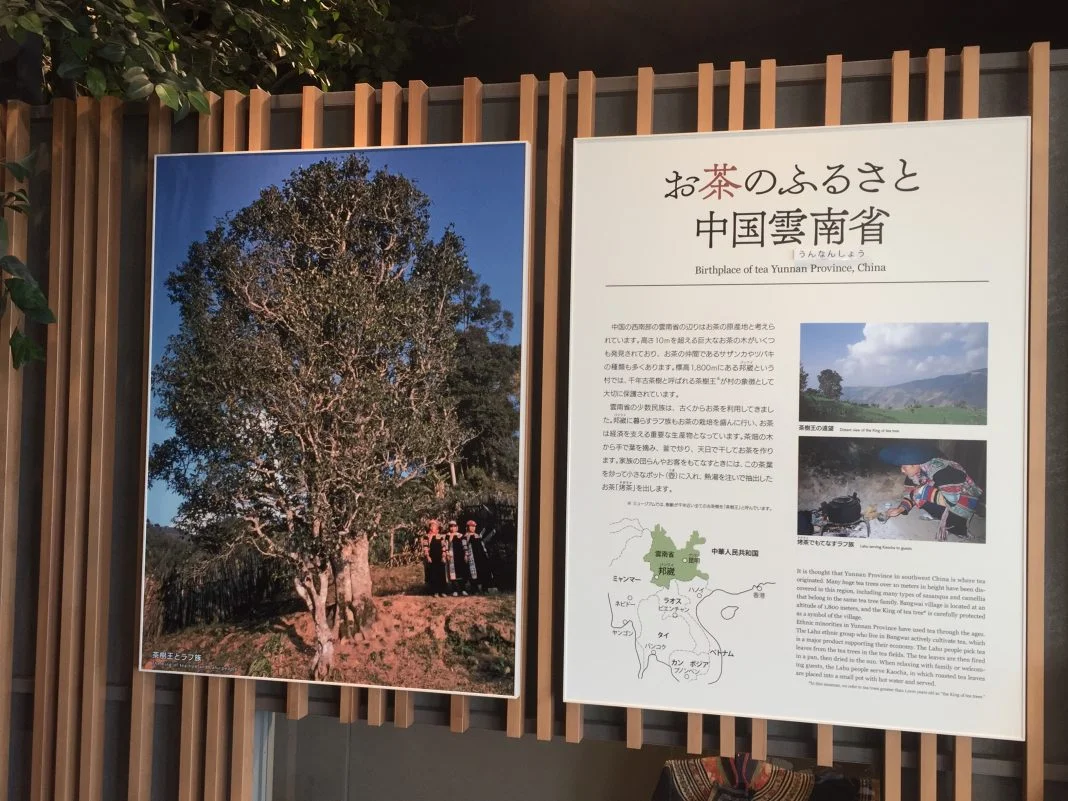
The tradition of drinking tea spread across the world from China. Depending on its propagation route, the word “tea” is either originate in “CHA” in Cantonese or “TAY” in Southern Min. “CHA” spread to Beijing, Korea, Japan, Mongol, and other Central and West Asia by land, while “TAY” spread to Europe through the trading route between Amoy (China) and the Netherlands.
Let’s experience a variety of tea
There are many types of tea on display in one corner of the exhibition room. You can touch, smell and experience the tea with all of your five senses.

Tea tastes different depending on the degree of oxidative fermentation. If the raw tea leaves are heated without fermenting, they become green tea; if they are slightly fermented before heating, they become “blue” tea (oolong tea); and if they are fermented for a long time before heating, they become black tea. It’s so interesting how the same raw tea leaves can become three different types of tea, depending on how they’re processed.
Japanese tea
The culture of tea has been prevalent in Japan since ancient times, most famously during the Muromachi period (1336-1573), when Sen no Rikyu developed “chanoyu,” the art of tea ceremony. The unique Japanese esthetic of Wabi-sabi was also born at this time.
Even within Japan, Shizuoka Prefecture is particularly famous as a tea producing area, and its residents are said to live longer than people from other prefectures (on average) thanks to their high tea consumption.
Cafe and restaurant area
At the cafe restaurant Maruobara, you can enjoy various dishes made with tea.
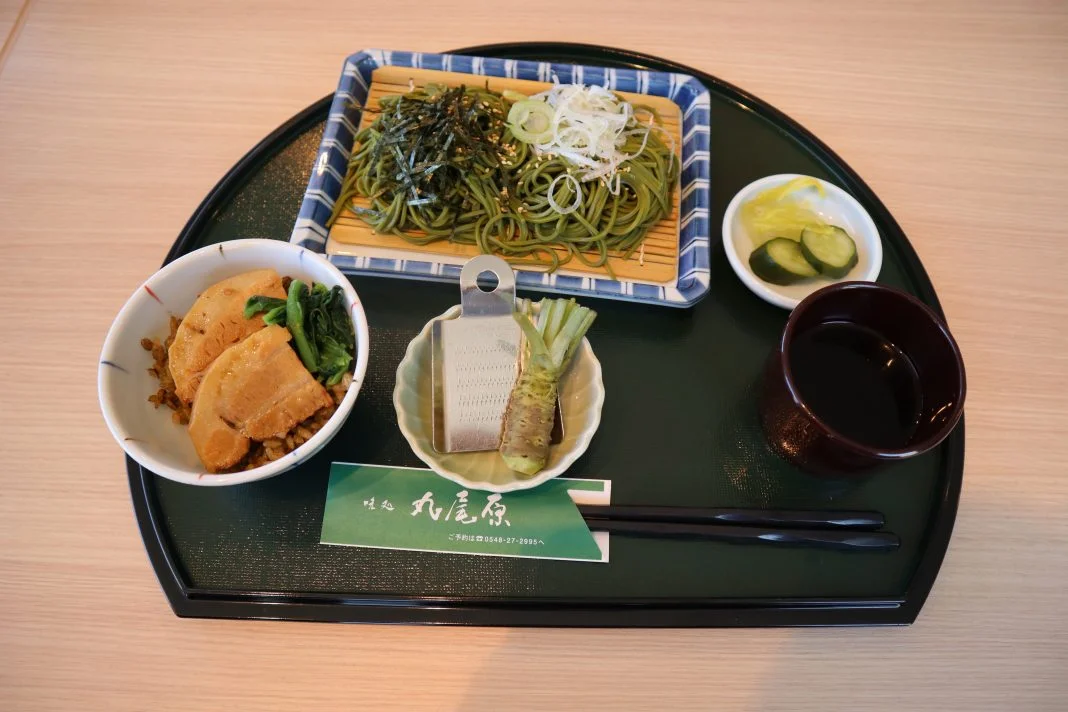
The photo shows tea soba noodles with a mini kakunidon (soy braised pork belly rice bowl). The tea are kneaded into the dough of the soba noodles, and when you eat them, you can sense the flavor of delicious tea spreading in your mouth.
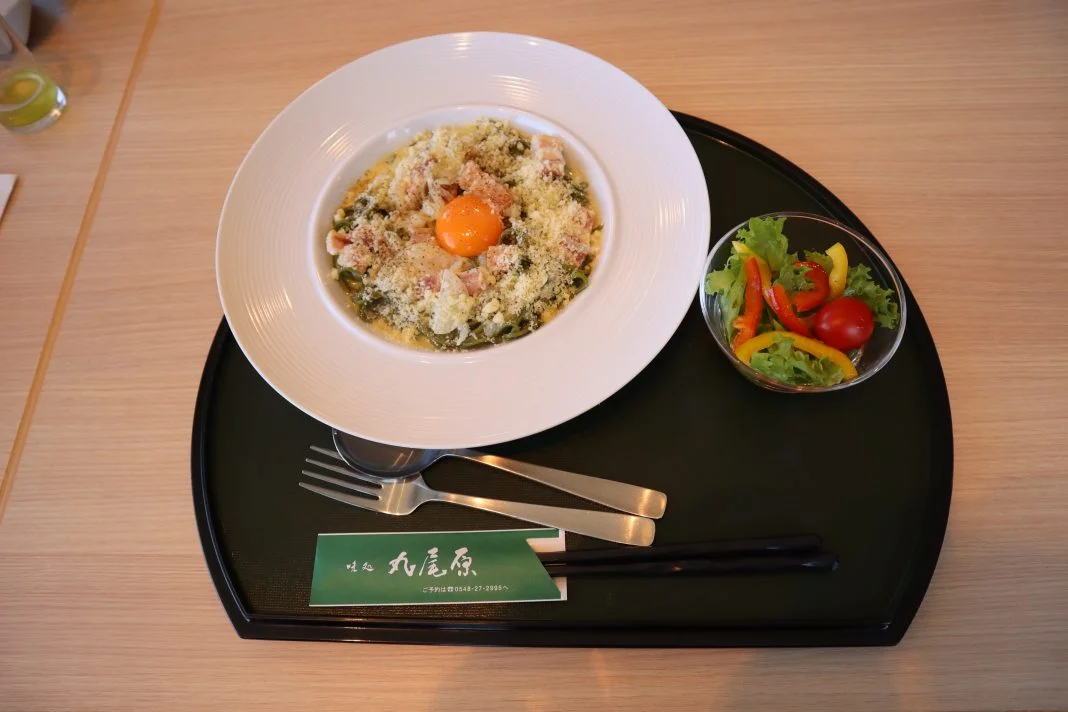
This one here is a carbonara-style tea soba noodles. The rich sauce matches the flavor of the tea, making for a very tasty dish.
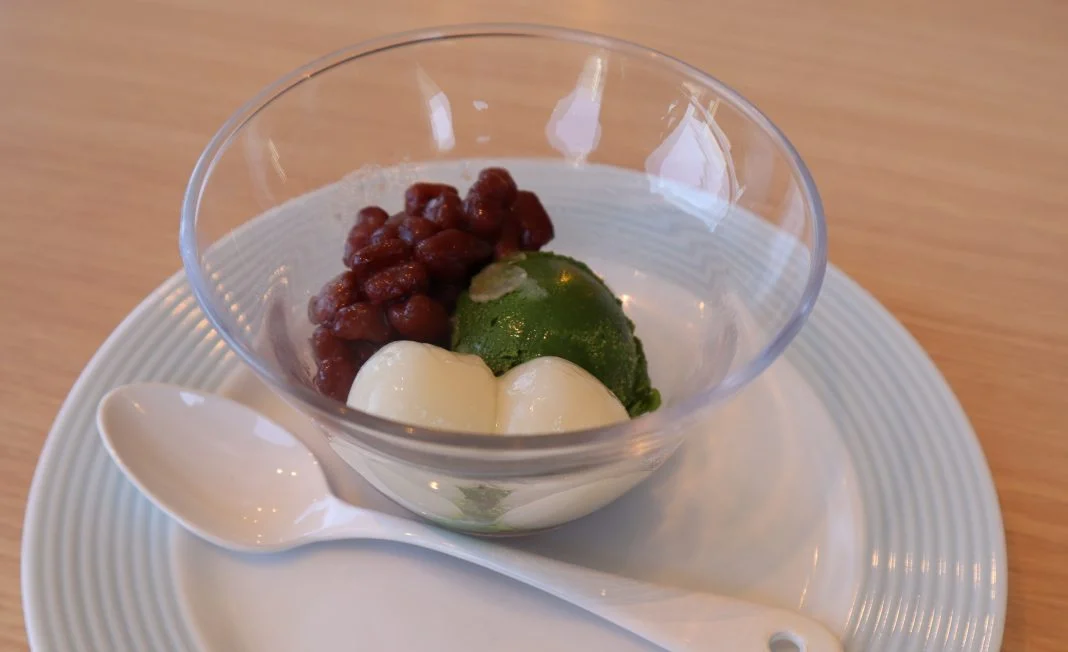
This is a matcha shiratama azuki made with matcha tea, shiratama rice dumplings, and azuki sweet red beans. The matcha ice cream is so thick and rich!



This restaurant also has a tea drink bar, which is quite rare. You can taste and compare lightly steamed tea, heavily steamed tea, morning-dew tea, and the famous Gyokuro tea. Give it a try, since you can only experience this at this restaurant.
Experiencing the Tea Ceremony
Outside the museum there is a authentic tea room where visitors can experience a traditional tea ceremony.
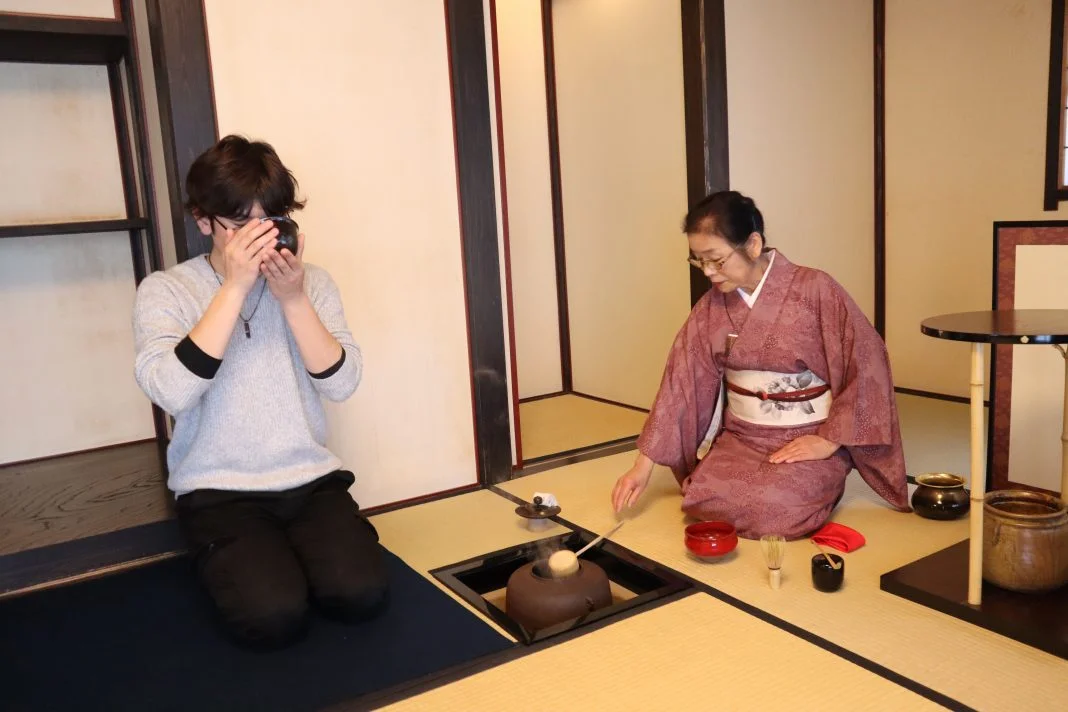


If you don’t know what to do in a tea ceremony, the masters will teach you, so even first-timers can relax and enjoy the experience. The matcha was delicious, with just the right amount of bitterness. Although after thirty minutes of kneeling seiza, my legs died towards the end … Those who don’t have strong legs and hips may want to take care.
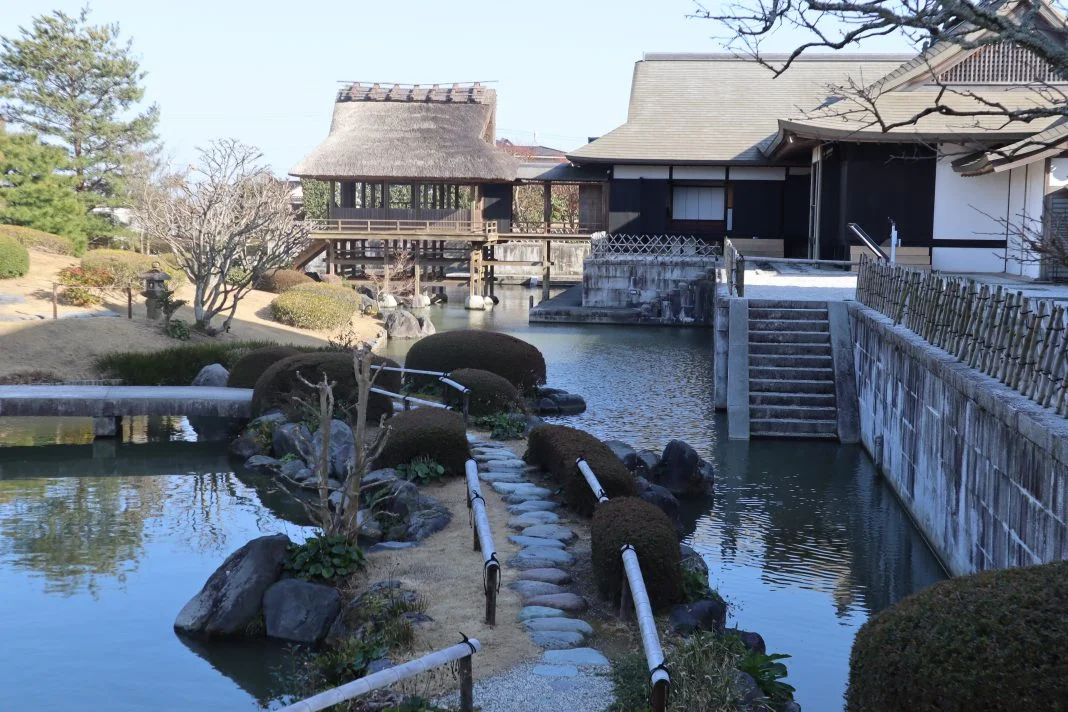

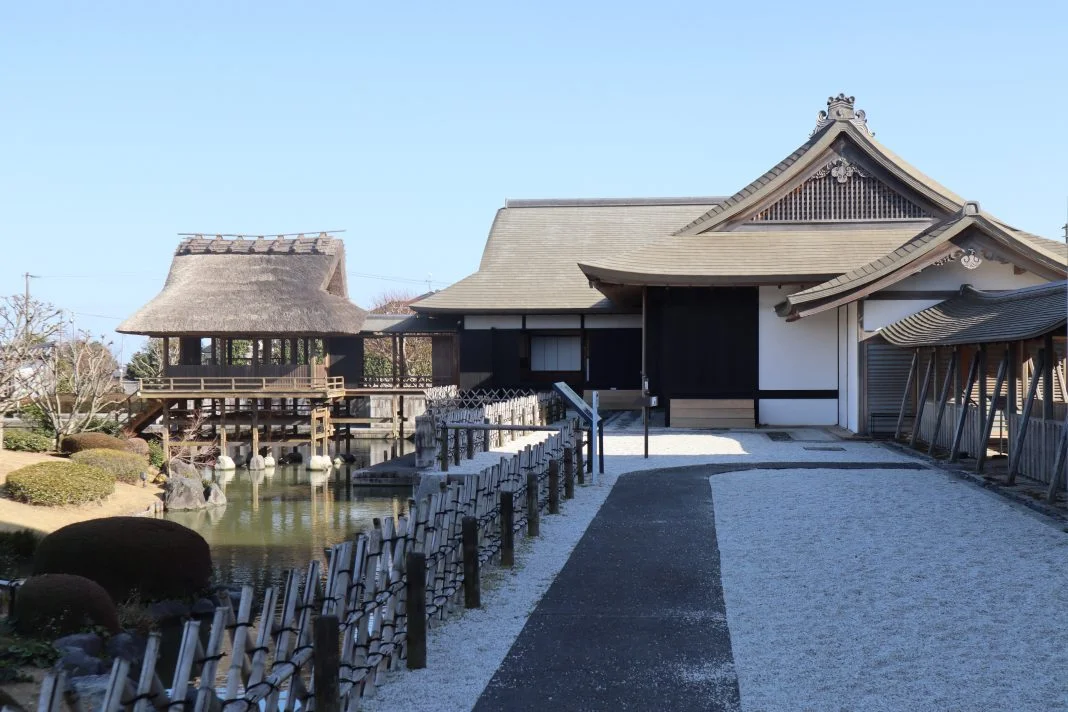
There is a Japanese garden outside the museum. It’s a reproduction of the east garden of the Sento Imperial Palace at Gomizuno’o Temple, which was built in 1634 by Kobori Enshu . The garden was designed in the Chisen-kaiyu-shiki (strolling garden) and Shuyu-shiki (boating garden) styles. After touring the museum, it would be nice to take a break while admiring the scenery. Different flowers are in bloom depending on the season when you visit, so the garden can be enjoyed all year round. The weather was beautiful on the day I visited, and I felt the daily fatigue leaving my body.
(The building in the back of the above picture is where you can experience the tea ceremony.)
So, what did you think? If you’re going to Shizuoka, I will highly recommend coming here, because you can relax while learning about tea. Please do pay a visit.